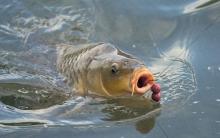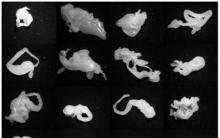At the beginning of summer, in a coniferous forest, you can find a herbaceous plant up to 40 cm high, blooming with beautiful purple-red flowers collected in inflorescences, which is called round-leaved wintergreen. However, it is not because of its beauty that this plant deserves close attention; the fact is that it is credited with a lot of useful properties, and this is what will be the main topic of today’s conversation.
At first glance, round-leaved wintergreen can be confused with lily of the valley, which is why it is often popularly called meadow lily of the valley, The plant has other names- periwinkle, birch, small wintergreen, pear, wintergreen, pear, pear, tears, wild incense, living grass, field pepper. Since ancient times, this plant has been used by folk healers to treat all kinds of ailments; nowadays, round-leaved wintergreen has again become popular as a remedy that can cure many diseases.
Compound
For medicinal purposes leaves, flowers and stem of wintergreen roundifolia are used, which include tannins, triterpenoids (taraxerol), iridoids (monotropen), phenols, naphthoquinone, ericolynchimaphilin, as well as a lot of vitamins, microelements, essential oils and resins. Wintergreen roots are often used in folk medicine; their healing effect is due to the fact that they contain glycosides, steroids, quinones and organic acids.
Properties
Currently in folk medicine, wintergreen roundifolia used as a diuretic, antiseptic, anti-inflammatory, hemostatic agent. An infusion of the leaves of this plant is effective for inflammatory diseases of the kidneys and bladder with purulent discharge, and inflammation of the prostate gland. Often, with the help of drugs that include the extract of this plant, they fight wounds, ulcers, inflammation of the throat and oral cavity. The beneficial effect of the plant is also noted on the functioning of the gastrointestinal tract (gastritis, enteritis, colitis, diarrhea). In dentistry, wintergreen decoctions are used to prevent caries and periodontitis.
The miraculous effect of wintergreen is also known in Tibet, where it is used for liver diseases and bone tuberculosis. In Western Europe, wintergreen was appreciated as an excellent diuretic and as an aid for diabetes.
And finally wintergreen is an excellent remedy for the treatment of male and female infertility caused by inflammatory processes of the reproductive system. Thanks to this property, the plant is included in drugs for the treatment of infertility, endometriosis, chronic adnexitis, tubal obstruction and a number of other diseases.
Wintergreen rotundifolia: contraindications
We can talk for a long time about the beneficial properties of wintergreen rotundifolia, but in this paragraph we will talk about its contraindications. So, before taking medications based on this plant, people suffering from thrombophlebitis, high blood viscosity, varicose veins, and hypotension should consult a doctor.
Wintergreen rotundifolia: application
For the treatment of female and male infertility
Take wintergreen, hogweed and wintergreen in equal proportions (50 grams each) and pour 1.5 liters of vodka. Place in a dark place to infuse, remembering to shake the medicine periodically. After 2 weeks, the tincture can be used for medicinal purposes 3 times a day, 1 teaspoon.
For rheumatism, severe headaches, fever, stomach pain, internal bleeding, purulent kidney diseases, as well as chronic inflammation of the genitourinary system
Pour 40 grams of dry crushed wintergreen leaves with 300–400 ml of boiled water. Insist for half an hour. Then strain the infusion. Use 4 times a day, 1/2 cup 30 minutes before meals or 2 hours after.
By diluting the infusion with water in a ratio of 1:5, it can be used to gargle and mouth, wash wounds, it will have an excellent antiseptic effect. This infusion is also useful for infertility.
Wintergreen for arthritis
Pour 10 grams of dry crushed wintergreen leaves with a glass of boiling water. Leave to infuse for 2 hours, then strain the infusion. The product should be used for joint diseases, 1/4 cup 3 times a day 30 minutes before meals or 2 hours after meals.
For inflammation of the prostate gland
Pour 1 tablespoon of dry wintergreen leaves with a glass of boiling water, cover and leave to steep for 3 hours. After time, the broth should be filtered and taken 3 times a day, 1/4 cup, half an hour before meals. The average course of treatment is a month.
Wintergreen is a flowering herbaceous plant from the heather family, growing in Russia in the regions of Siberia and the Far East. It is also found in the Caucasus and Central Asia. The grass prefers coniferous pine forests and cedar forests. In folk medicine it is used as a hemostatic, anti-inflammatory, sedative and diuretic. Next, we will look in more detail at what wintergreen roundifolia is, its medicinal properties, contraindications, use in gynecology and reviews of those who have been treated with it.
Wintergreen: medicinal properties
The medicinal properties of round-leaved wintergreen are determined by the composition of the medicinal substances that are found in it, namely:
- essential oils;
- vitamins;
- glycosides;
- organic acids;
- tanning components;
- monotropeins;
- phenols;
- naphthoquinone;
- microelements;
- resinous substances;
- steroids;
- quinones.
Contraindications
The described forest grass has practically no contraindications. However, it is better not to use decoctions and tinctures from it for those who are prone to a sharp drop in blood pressure, as well as those suffering from varicose veins and thrombophlebitis.
The use of wintergreen rotundifolia in folk medicine
In folk medicine, the herb has found quite extensive use due to its medicinal properties. It is successfully used to treat a number of ailments, including:
- Inflammatory processes of the respiratory system;
- Gynecological diseases in women;
- Gastritis, colitis and other ailments of the gastrointestinal tract;
- Inflammatory liver diseases;
- Liver diseases;
- Dyspnea;
- Chronic fatigue;
- Stool disorder;
- Diabetes mellitus;
- Skin diseases;
- Migraine;
- Epilepsy;
- Osteochondrosis;
- Gout;
- Purulent wounds;
- Blood loss;
- Hernia and others.
At the same time, as evidenced by patient reviews, herbal decoctions are very well tolerated, without causing negative reactions and having virtually no contraindications.
Application in gynecology
Wintergreen has the following medicinal properties and contraindications in gynecology:
The medicinal properties of the plant are used to treat:
- diseases of the uterus;
- obstruction of the fallopian tubes;
- inflammation of the bladder;
- pain during menstruation;
- swelling during pregnancy;
- whiter;
- infertility.
Contraindications:
- hypotension;
- allergic intolerance;
- varicose veins
Medicinal infusions, decoctions and teas from the plant, prepared according to the following recipes, are very useful:
- Infusion– pour boiling water over two teaspoons of dry raw materials, leave for about two hours, filter and take two tablespoons three times a day 30 minutes before meals. This remedy effectively treats rheumatism, arthritis, gout and other ailments.
- Tea– pour a pinch of dry leaves into a teapot, add boiling water, leave for about 20 minutes, strain, add honey and drink like regular tea. This drink copes well with insomnia, calms the nervous system, strengthens the immune system and helps treat enuresis in children.
- Decoction– take a tablespoon of seeds or crushed rhizomes of wintergreen and pour 200 ml of boiling water, place in a water bath and simmer over low heat for half an hour, filter after 10 minutes. It is recommended to take two tablespoons of the decoction before meals three times a day.
All of the above recipes have a minimum number of contraindications - an allergy to the plant or its constituent components, a tendency to very low blood pressure, varicose veins. It is advisable to consult with your personal physician before starting treatment with these medications.
Wintergreen rotundifolia has many beneficial properties and is widely used in gynecology. It is used to treat blocked fallopian tubes, eliminate menstrual pain and even treat infertility.
Patient reviews of the herb and its medicinal properties are very positive. After starting therapy, the plant helped many women conceive a child.
As user reviews on relevant Internet forums show, the use of teas, decoctions and infusions made from wintergreen helps eliminate many gynecological ailments - thrush, tubal obstruction, painful menstrual syndrome and infertility. The plant has minimal contraindications - personal rejection, hypotension, thrombophlebitis, varicose veins.
Wintergreen tincture: recipe
For those who decide to use this miraculous herb for medicinal purposes, we advise you to write down the following recipe for wintergreen tincture:
- buy two packs of herbs at the pharmacy;
- fill them with one liter of pure alcohol
- leave for 18 days in a dark, warm place, stirring the composition from time to time;
- strain the mixture through cheesecloth;
- apply 25 drops three times a day before meals for 20 minutes.
This remedy helps with conception, normalizes the menstrual cycle, and improves mood.
Wintergreen for infertility
The beneficial medicinal properties of rotundifolia herb when planning pregnancy have been known for a long time. As evidenced by the reviews of those women who took it, the herb helps to successfully treat such serious gynecological ailments as obstruction of the fallopian tubes and even infertility.
For infertility, a tincture is used, which is prepared according to the following recipe:
- 50 grams of dry leaf material are placed in a glass container;
- add half a liter of vodka to the same container;
- put the tincture in a dark place for three weeks, shaking the mixture regularly;
- after 21 days the medicine is filtered;
- The tincture is taken as follows: 30 minutes before meals, 1 teaspoon three times a day; you can use the mixture an hour after meals. The course of treatment is from 3 months to six months.
During pregnancy
During pregnancy, the herb also reveals its beneficial properties - it is harmless and therefore can be used as a remedy to relieve muscle pain, heal wounds and inflammation on the skin. To improve lactation, women after childbirth are recommended to lubricate their breasts with wintergreen essential oil. Reviews from women about the use of the plant in gynecology and pregnancy are overwhelmingly positive.
Instructions for use:
Wintergreen is a medicinal plant that has an antiseptic, diuretic, anti-inflammatory, and hemostatic effect.
Chemical composition
Wintergreen (pear, pear, pear, periwinkle, tears, living grass, wild incense, field pepper, meadow lily of the valley) is a perennial herbaceous plant, belongs to the genus of flowering plants of the Ericaceae family.
Wintergreen rotundifolia is usually used for medicinal purposes.
The plant contains:
- iridoids (monotropein), phenols, tannins, triterpenoids (taraxerol), ericoline, himaphilin, naphthoquinone, as well as resins, trace elements, vitamins and essential oils (aerial parts of the plant - leaves, stems and flowers);
- organic acids, steroids, quinones, glycosides (roots).
Useful properties
In folk medicine, wintergreen is used as a diuretic, antiseptic, anti-inflammatory, and hemostatic agent.
As a wound-healing and anti-inflammatory agent, decoctions are used externally - in the form of compresses and for washing purulent wounds. They are also used in the treatment of various skin diseases, scrofulous ulcers, gynecological problems and scurvy.
The plant is widely used in Tibet as an effective wound-healing and antipyretic agent, as well as for inflammatory processes of the female genital organs, bone tuberculosis, and some liver diseases. In China, only the above-ground parts of wintergreen - flowers and leaves - are used. Decoctions and infusions are used as an analgesic and hemostatic agent, as well as in the treatment of animal and insect bites. Topically and externally, the plant is used in the form of compresses, mouth and throat rinses, and in the treatment of purulent blepharitis and skin diseases.
As a powerful stimulator of the sex glands, wintergreen is used in folk medicine to treat female and male infertility associated with inflammatory processes. In modern gynecology, the plant is included in medications for the treatment of infertility, endometriosis, chronic adnexitis, tubal obstruction and some other diseases.
Essential oils prepared from young shoots and leaves of wintergreen are highly valued in medicine and cosmetology. The essential oil has a diuretic, antirheumatic, antiseptic, analgesic, antispasmodic, anti-inflammatory, sedative, absorbable, astringent, vasodilator, carminative, stimulating, antitussive effect. It also helps to increase lactation in women, helps to relax, calms, improves mood, alertness and mental activity.
Indications for use
- swelling;
- dropsy;
- joint diseases;
- gout;
- disorders of the digestive system (chronic constipation, peptic ulcer of the stomach and duodenum, dysbacteriosis; to improve appetite and digestion; as an astringent and anti-inflammatory agent);
- hernias;
- disorders of the genitourinary system (prostate diseases, impotence, infertility, obstruction of the fallopian tubes, cystitis);
- headaches, migraine;
- diseases of the larynx and throat;
- difficult-to-heal wounds, ulcers, fistulas, furunculosis;
- diabetes mellitus
Contraindications
- varicose veins;
- hypotension;
- thrombophlebitis;
- increased blood clotting;
- individual intolerance to biologically active substances of wintergreen.
Homemade remedies from wintergreen
- decoction: 2 teaspoons of herbs per 200 ml of boiling water; infusion time – 2 hours. Directions for use: before meals, 3 times a day, 1–2 tablespoons (possibly adding honey);
- tincture: 4 tablespoons of herb per 0.5 liter of vodka; insist in a dark container in a cool, dark place; infusion time - from 3 to 4 weeks (the tincture should be shaken daily). Directions for use: 30–40 minutes before meals, 3 times a day, 20–30 drops.
Among the huge number of medicinal plants donated by nature, the medicinal herb round-leaved wintergreen, or small wintergreen, is known, which is highly valued by herbalists. The herb is called differently: wild incense, living grass.
Among the huge number of medicinal plants donated by nature, the medicinal herb wintergreen rotundifolia is known
Small wintergreen loves moist soil. And therefore it can be found in mixed forests and meadows, among blueberries and lingonberries. In Russia, the plant can be found in the Urals, Far East or Siberia.
In official medicine, it is used only in dentistry, and in homeopathy and herbal medicine it is widely used as part of dietary supplements and herbal teas. Wild frankincense can be found in many oral care products. It has a detrimental effect on the bacteria that settle in it.
The medicinal plant is useful for the following properties:
- diuretic;
- sweatshop;
- antiseptic;
- anti-inflammatory;
- antispasmodic;
- astringent.
Patients are interested in how wintergreen is used, its medicinal properties and contraindications to the use of the herb. Chinese and Tibetan doctors have recognized wintergreen as a natural antibiotic and use it to treat liver disease, bone diseases and fever. The essential oil that the plant is rich in is used by the Chinese in medicinal ointments for sore joints.

Gallery: wintergreen (25 photos)



How is wintergreen used?
The plant is used in gynecology and urology. Live herbs treat infertility, in particular ovarian dysfunction, disruption of the ovulation process, menstrual irregularities, and obstruction of the fallopian tubes. The plant helps with inflammation of the appendages, colpitis, vaginitis, uterine prolapse, bleeding after childbirth, and genital infections. For men, it helps with prostatitis and prostate adenoma, and restores male strength.
The herb is also used in endocrinology. Wintergreen rotundifolia is used for diabetes mellitus, as it lowers blood glucose levels. The plant eliminates skin problems (boils, ulcers), heals bones and joints.
Since wintergreen promotes profuse urination, a significant amount of salts have been observed in urine when taken. Salt deposits are cleansed, which improves the condition of the joints and reduces gout.
Diseases of internal organs are treated with the help of this healing herb. A decoction of the medicinal plant wintergreen is useful to use when the disease takes a chronic form. It alleviates a person’s condition with diseases of the kidneys, bladder, and inflammation of the gastrointestinal tract. The plant contains mucus, which, once in the body, envelops the entire mucous membrane of the digestive tract, thereby reducing inflammation.
 The plant is used in gynecology and urology
The plant is used in gynecology and urology Diseases of the mouth and throat can be treated with this herb. An infusion of leaves is useful for rinsing the mouth and throat during bacterial infections. Using this solution helps get rid of bad breath.
Wintergreen rotundifolia and its beneficial properties (video)
Contraindications to the use of the plant
- Contraindications include increased blood clotting and a tendency to vascular diseases (varicose veins, blood clots, etc.).
- Considering that the plant has a pronounced diuretic effect, hypotensive patients should not use it, as the decoction lowers blood pressure.
- Treatment with elevated hemoglobin is contraindicated.
- Breastfeeding and pregnant women are also contraindicated to be treated with this drug.
Remember that herbs, like medications, can cause serious harm to the body, so before starting treatment, familiarize yourself with possible side effects in order to prevent complications in time.

Typically, the herbal preparation is well tolerated by the body, but if used uncontrolled, an overdose is possible and blood may appear when urinating. In this case, treatment should be stopped and consult a doctor.
How round-leaved wintergreen is prepared and its use in folk medicine is of interest to many. The most suitable period for collecting is summer; the plant actively blooms at this time. For medicinal purposes, the aerial part should be collected. Dry the grass in a room where there are drafts and no direct sunlight. Lay out the leaves in one layer.
Wintergreen rotundifolia (video)
Recipes for preparing folk remedies
There are no complicated recipes for preparing medicines from wintergreen. A decoction or alcohol tincture is prepared according to the classic recipe. You can use either fresh or dried leaves of the plant.
The decoction is prepared as follows: pour 10 g of medicinal herb with a glass of boiling water, you can infuse it in a thermos or simply wrap it in a towel. After 2 hours, strain. You should consume 2 tbsp. spoons. Three times a day will be enough.
For alcohol tincture you need 70% alcohol or vodka. 4 tbsp. l. wintergreens pour 0.5 liters of alcohol. Keep in a dark place for 1 month, shaking the container periodically. Take the prepared and strained tincture 20-30 drops 3 times a day.
For infertility, as well as to relieve inflammation in the pelvis, douching is done. In the morning and evening, douching should be done with the following solution: brew 1 des. l. medicinal herbs 1 liter of boiled water. Leave for 2 hours and strain through several layers of gauze.
For infertility, you should take the decoction 3 times a day, 2 large sips before meals. You can take a tincture instead of a decoction.
Treatment with folk remedies requires patience, since their effect on the body occurs gradually. Much depends on the individual characteristics of the body, body weight, age, lifestyle and other factors.
 There are no special complicated recipes for preparing medicines from wintergreen. A decoction or alcohol tincture is prepared according to the classic recipe
There are no special complicated recipes for preparing medicines from wintergreen. A decoction or alcohol tincture is prepared according to the classic recipe Indians living in North America used wintergreen to make drinks. They noticed its healing properties. And in Ancient Rus', people made wine from the plant, brewed the leaves and used them as tea.
The flowers of the plant are very similar in shape to pear flowers, but their size is quite small. That is why the grass was nicknamed wintergreen.
To prepare a drink based on wintergreen you will need:
- wintergreen (plant leaves);
- cranberry;
- cowberry;
- red currant.
Boil like a compote, cool and consume chilled. The drink is considered a tonic, so you should drink it in small portions.











Basic terms and conditions of the life insurance contract
Currency option. Options
Why do you dream about a baby boy or girl?
Interesting facts and events from around the world
Shocking facts about everything